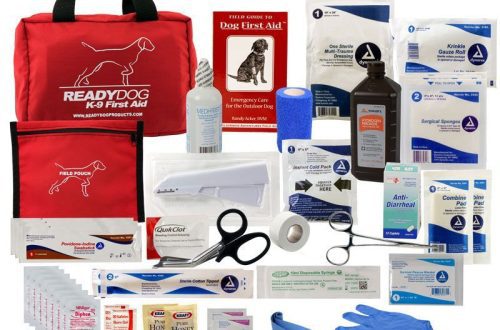
Alèji nan chen ak chat: sa k ap pase ak ki jan yo geri
Boris Mats, a veterinarian at the Sputnik clinic, explains how to recognize allergies in pets in time and provide first aid.
Let’s figure it out:
What are allergies in cats and dogs?
What are the signs of allergies in dogs and cats?
How to help your pet with common types of allergies
What is the most dangerous allergy
Allergies in dogs and cats occur in much the same way as in humans. The pet’s immune system also reacts inadequately and hypertrophied to substances that do not pose a real danger. Let’s say the dog tries the food. It contains proteins and they are safe. But the body perceives them as molecules of enemy microorganisms and reacts with allergies. The same thing happens with pollen, dust and other environmental components. This is a general principle. Next, I will talk in detail about the most common types of allergies in dogs and cats. And in the end – about the most dangerous form of allergy.

Insect allergies in dogs and cats are most often caused by fleas, namely their saliva. Don’t believe the stereotype that allergies only start when parasites have settled in your pet’s coat. In fact, even a single flea bite can trigger an allergy. It is caused not only by fleas, but also by mosquitoes and midges – especially in summer and in the countryside. The first and main symptom of an allergy to insects is that the dog or cat itches. Allergies are indicated by skin inflammation, scratching on the back and closer to the tail. In this case, hurry to the veterinarian.
Ignoring the first symptoms of an allergy is dangerous. If the dog scratches the bite, there is a risk that a secondary infection will join. Prevention helps to avoid these problems. To protect your pet from allergies to insect bites, it is enough to regularly treat it from parasites. And here, many owners make a mistake: they are afraid of drugs against skin parasites and treat their pets only in the summer. Or not processed at all. But if a cat or dog has no direct contraindications to the use and individual intolerance to specific drugs, the likelihood of side effects is almost zero. In this case, act strictly according to the instructions of the drug. If the remedy is valid for a month, then treat your pet from parasites once a month – at least.
Sometimes dogs and cats become allergic to food in response to a specific type of protein. The most common symptom of a food allergy is itching. At the initial stages, it is not easy to notice it: the pets do not have time to comb themselves yet. To dispel doubts, use cunning. Check to see if your pet is itchy or habitually licks itself. To do this, lightly scratch your pet’s sides and slightly press on the ears. If a cat or dog twitches its paw when you tickle its side, or leans in when you squeeze its ears, it is most likely itching. This method does not always work, but it can help to better understand the condition of the pet.
In just 15% of cases, itching, crusts and redness mean an allergy.
Every second pet with a food allergy disrupts the digestive tract. There is vomiting, diarrhea, defecation becomes more frequent. In addition, if a pet is allergic to food, otitis media can occur. Often they are accompanied by secondary diseases: bacterial or fungal. At the same time, the auricles turn red and itch, discharge appears from them. Other dermatological symptoms of food allergies are rashes, redness, and eosinophilic granulomas. All of these symptoms indicate the need to take your pet to the veterinarian.
The diagnosis of food allergy is made on the basis of long testing and the exclusion of other problems. A professional doctor will definitely conduct a diet test – the pet is transferred to a special diet, followed by a provocation with the previous food. But you have to be patient – this important diagnostic stage lasts for months.

Often, pets are allergic to environmental components. It is more common in dogs and more studied in them. But this does not mean that cats do not have it. The most common symptoms of atopic allergies are itching, reddening of the skin, and the appearance of crusts all over the body. Rhinitis and respiratory system damage occur less frequently.
Atopic allergy is usually diagnosed when no other cause has been found. Sometimes the doctor finds out that the pet has this particular disease only after months of diagnosis.
Allergies in cats and dogs also occur when the skin comes in contact with irritating substances. The skin swells, becomes covered with a severe rash, an unbearable itching appears. In this case, I recommend rinsing the contact area abundantly with warm saline or plain water and taking your pet to the veterinarian.
With allergies, the most important thing is not to allow the pet to comb and injure itself. To do this, it is enough to put on an “Elizabethian collar” on a cat or dog. Discuss other measures with your veterinarian.
And finally, the most difficult – anaphylaxis. This acute allergic reaction develops in pets in the first minutes after interaction with the allergen. The target organs for anaphylaxis in cats are the lungs, in dogs the liver.
Symptoms of anaphylaxis:
Swelling of the muzzle, neck, paws
toudenkou letaji
gratèl
Vomisman, dyare
Dyspnea
Anxiety and agitation
Salivasyon
Lakrimasyon
Doulè nan vant
Blueness of the mucous membranes
Dezoryantasyon
Konvulsyon
A dangerous consequence of anaphylaxis is the expansion of blood vessels throughout the body. This leads to a sharp drop in blood pressure and impaired airway patency. The nutrition of all organs and tissues, the supply of oxygen is disrupted.
Anaphylaxis can lead to the rapid death of a beloved pet. Therefore, postponing a trip to the veterinarian in such a situation is risky: it can cost the pet his life.
Sudden lethargy, lack of reactions to stimuli in the pet, respiratory failure – this is a reason to urgently contact the nearest veterinary clinic.
In this article, I have described the main types of allergies. But there are many more allergens. And skin symptoms are not always associated with allergies. For accurate diagnosis and treatment, be sure to consult a veterinarian. Be prepared that it may take months to find the problem, and the pet will receive drugs throughout his life. But the quality of his life will not suffer.





